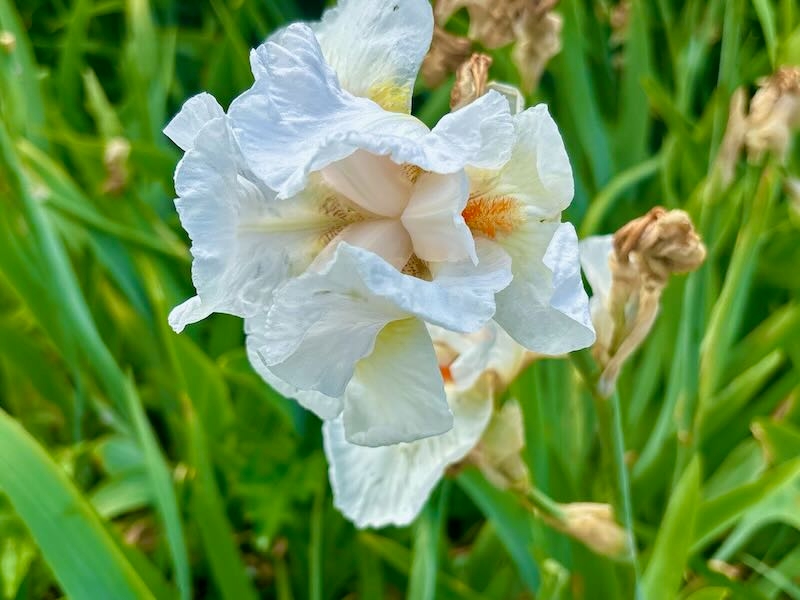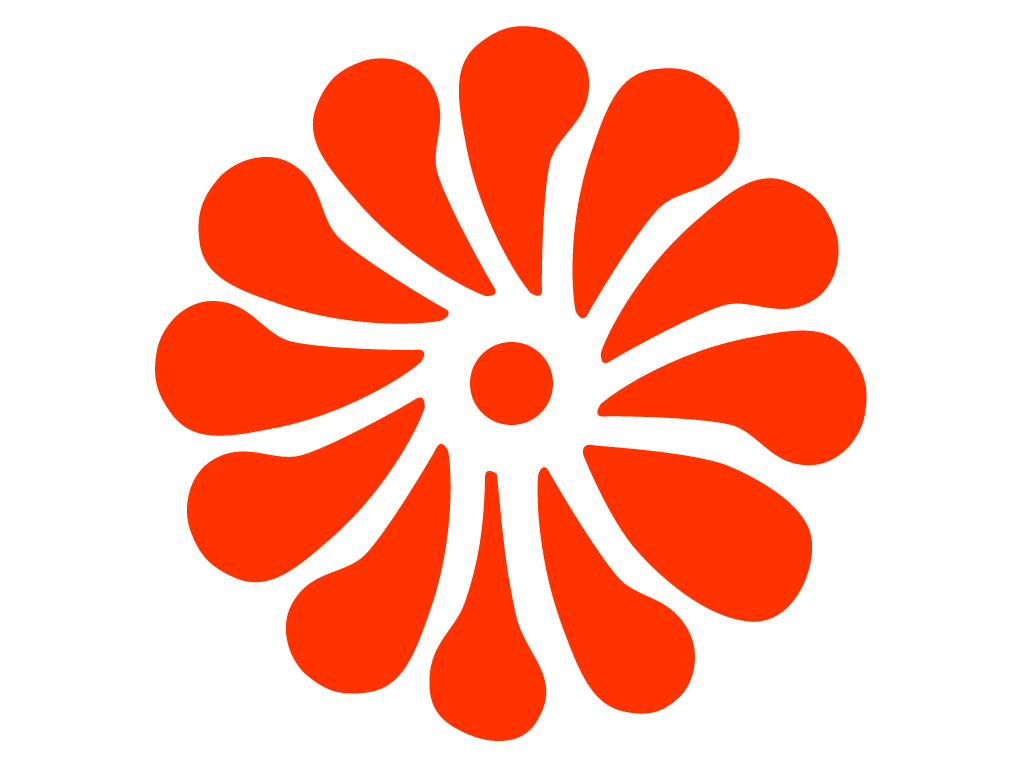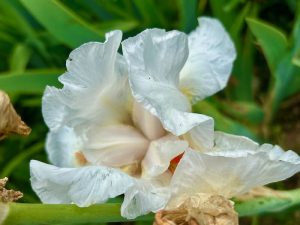Iris ‘Frost and Flame’: A Classic Tall Bearded Iris with Dazzling Contrast
Iris ‘Frost and Flame’ is a tall bearded iris that commands attention with its pure white ruffled petals and brilliant tangerine-red beards. Introduced in 1957 by renowned hybridizer David F. Hall, this variety quickly became a favorite among iris enthusiasts for its bold contrast and refined form. Belonging to the Iridaceae family, it combines elegance with resilience, making it an excellent choice for gardeners who want showy spring blooms that stand the test of time.
A Historic Beauty
The 1950s marked an era of significant iris hybridization, with breeders pushing boundaries to create irises with striking color contrasts and improved form. David F. Hall, well known for developing the famous “Flamingo pink” iris series, introduced Iris ‘Frost and Flame’ as part of his quest for a faultless white iris accented by a vibrant tangerine beard. This goal was achieved beautifully in this cultivar, which continues to be treasured by the Historic Iris Preservation Society and gardeners who appreciate its timeless elegance.
Description of Iris ‘Frost and Flame’
This tall bearded iris grows in clumps, forming dense fans of upright, strap-like, dark green leaves. At maturity, the plants reach a height of about 90–100 cm (36–40 inches), making them ideal for mid- to back-border plantings.
The flowers are large and beautifully ruffled, with pure white standards and falls that create a luminous, clean look in the garden. The real surprise lies in the beard: a bold tangerine-red accent that adds depth and contrast to the otherwise snowy blooms. This distinctive color combination gives Frost and Flame its signature “flame” effect, setting it apart from other white bearded irises.
Blooming in late spring to early summer, each stalk carries multiple buds, ensuring a prolonged display. The flowers are lightly fragrant, adding another dimension of appeal to this classic variety.
Growth Habit
Iris ‘Frost and Flame’ is a rhizomatous, herbaceous perennial that thrives in temperate climates. It has a clump-forming habit, spreading slowly over time through its thick, fleshy rhizomes. With proper care, it becomes a long-lived, low-maintenance feature in perennial beds, borders, and cottage gardens.
How to Grow Iris ‘Frost and Flame’
To fully appreciate the beauty of this historic iris, plant it where it will thrive. Like most bearded irises, it performs best with plenty of sunlight, well-drained soil, and thoughtful care throughout the year.
Light
Plant Iris ‘Frost and Flame’ in full sun, giving it at least 6–8 hours of direct light daily. While it can tolerate partial shade, especially in hotter climates, reduced sunlight often leads to fewer blooms and weaker growth.
Soil
This tall bearded iris thrives in neutral to slightly acidic soil (pH 6.8–7.0). Drainage is crucial: waterlogged soils increase the risk of rhizome rot. In heavy clay soils, amend with compost, coarse sand, or aged manure to improve texture and aeration. Sandy soils benefit from organic matter to retain moisture while maintaining good drainage.
Watering
Water newly planted rhizomes thoroughly to encourage root establishment. Once established, Iris ‘Frost and Flame’ is relatively drought-tolerant. Deep watering every 3–4 weeks during prolonged dry periods keeps it healthy, but always allow the soil to dry between waterings. Overwatering can lead to bacterial rot, so err on the side of caution.
Fertilizing
Fertilize in early spring as new growth emerges and again about a month after flowering to replenish nutrients. Use a low-nitrogen, high-phosphorus formula such as 5-10-10 or 6-10-10 to encourage blooms and healthy roots. Avoid high-nitrogen fertilizers, as these promote leafy growth at the expense of flowers and increase the risk of rot. Work fertilizer into the soil around the base, keeping it away from direct rhizome contact.
Planting
Plant rhizomes in late summer to early fall, ideally from late August through October, giving them enough time to establish before winter. In warm climates, planting can extend into early winter.
Place rhizomes horizontally with roots fanned out beneath them. Position them so the top of the rhizome is exposed or just barely covered with soil—burying them too deeply can prevent flowering and lead to decay. Space rhizomes 30–60 cm (12–24 inches) apart for airflow and to prevent overcrowding.
Pruning and Maintenance
Deadheading
Remove spent flower stalks promptly by cutting them back to the base. This keeps the clump tidy and prevents energy from being wasted on seed production.
Foliage Care
Leave green foliage in place after blooming so the plant can store energy for next year’s flowers. In autumn, cut back leaves to 10–15 cm (4–6 inches) after the first frost to reduce overwintering pests and disease.
Dividing
Divide clumps every 3–5 years or when flowering declines. Late summer, about 6–8 weeks after blooming, is the best time. Dig up the clump, trim leaves to 15 cm (6 inches), and discard any old or soft rhizomes. Replant the healthiest divisions in refreshed soil.
Weeding and Mulching
Keep iris beds weed-free to prevent competition for nutrients. Avoid mulching directly over rhizomes, as this traps moisture and leads to rot. In colder climates, apply a light winter mulch of straw or evergreen boughs after the ground freezes, removing it in early spring.
Pests and Diseases
Iris ‘Frost and Flame’ is susceptible to common iris problems if grown in poor conditions.
- Iris Borer: Watch for streaked, chewed leaves. Inspect and destroy any borers manually. Remove and discard infested foliage in autumn.
- Bacterial Soft Rot: Ensure good drainage and proper planting depth to prevent rot. Remove and dispose of affected rhizomes.
- Slugs and Snails: These pests may feed on tender new leaves; hand-pick them or use traps if necessary.
Proper spacing, good air circulation, and avoiding overwatering go a long way in keeping the plant healthy.
Overwintering
Hardy in USDA Zones 3–9, Iris ‘Frost and Flame’ withstands winter cold with ease. In regions with harsh winters, cut foliage back and apply a light protective mulch after the ground freezes. Remove this mulch in spring to prevent rot.
Landscaping Uses
The tall, elegant blooms of Iris ‘Frost and Flame’ make it an excellent focal point in mixed borders, cottage gardens, and historic plant collections. Pair it with peonies, lupines, or ornamental alliums for a layered late spring display. Its striking white and orange coloring brightens up garden beds and provides a clean contrast against deep green foliage or darker-colored blooms.
Why Grow Iris ‘Frost and Flame’?
This historic iris combines strong garden performance with timeless beauty. Its pure white blooms and fiery beards are visually striking, while its low-maintenance nature makes it easy to grow for both beginners and seasoned gardeners. With proper care, it can provide years of dependable spring color and remain a highlight in any iris collection.



